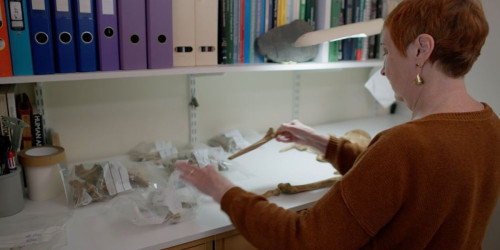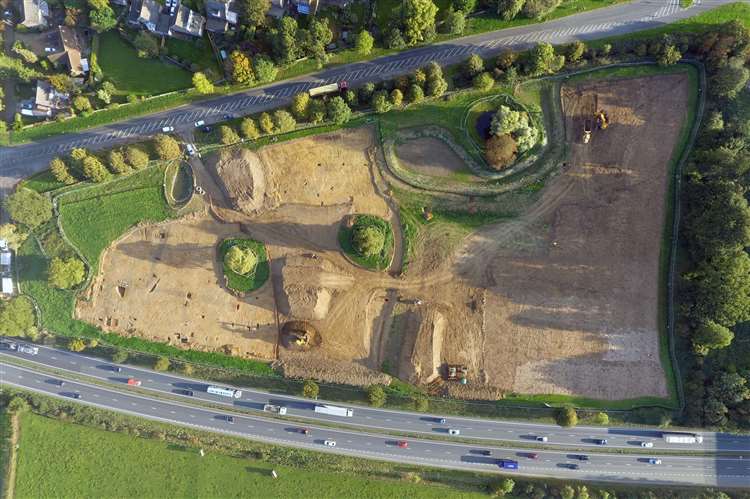
Cambridgeshire Crucifixion: unravelling a Roman mystery
Lucy Cavendish College Director of Studies, Dr Corinne Duhig, helps one skeleton reveal a brutal fate and a glimpse into life under Roman rule.
Lucy DoS Dr Corinne Duhig reports for British Archaeology on only known example of a Roman crucifixion in the British Isles
Two adjacent excavations in Fenstanton, Cambridgeshire exposed parts of a Roman-period settlement located south of the Via Devana that linked Roman Cambridge and Godmanchester.
David Ingham’s, project manager at Albion Archaeology, evaluation trenches quickly made it clear that a Roman settlement was present.
The settlement, discovered by Bedford-based Albion Archaeology in 2017, was founded in the late 1st or early 2nd century AD and continued throughout the Romano-British period. Zooarchaeology suggests that part of the area might have had a specialist function in processing cattle bones for secondary products, showing its integration into a local, and perhaps more widespread, service/supply network.
The site had five small cemeteries dating to the 4th century AD and a few isolated burials of which the latest dated to the 1st or 2nd century AD, plus one very late Roman or probably Anglo-Saxon burial who is interesting in himself due to his suite of traumatic, possibly weapon, injuries.
The total number of skeletons is 48, ranging from newborns and children to older adults, but with a rather low number of children as is common in ancient cemeteries; females and males are roughly equally represented.

Amongst the finds is a heel bone and nail, best explained as a case of crucifixion, the only one known from the British Isles and the fourth reported worldwide – and the best preserved, according to a team including Lucy Cavendish DoS and University of Cambridge osteoarchaeologist Dr Corinne Duhig.
The full results of these excavations are in the final stages of analysis and will be published in specialist journals and as a separate monograph, with the archive deposited in the Cambridgeshire County Council Archaeological Archive Facility.=
The lucky combination of good preservation and the nail being left in the bone has allowed Dr Duhig to examine this almost unique example when so many thousands have been lost.
Osteoarchaeology gives valuable insight about what life was like for people who left behind no written record, about the health, lifestyle, diet, mortality, physique, genetic relationships and movement of people in the past.
Dr Duhig’s skeletal collection is held at Lucy Cavendish College and will soon be available for teaching, providing an excellent practical resource for our students to learn from human remains.
About Dr Corinne Duhig
Corinne teaches in the Department of Archaeology and the Institute of Continuing Education at Cambridge. Her specialism is the study of human remains, and her main, although not exclusive, focus is ancient Egypt. Corinne is Lucy Cavendish College Director of Studies in Archaeology & Anthropology and a College Teaching Associate and Director of Studies in Archaeology at Wolfson College. She runs the osteoarchaeology and funerary-archaeology consultancy Gone to Earth and worked for many years in forensic archaeology and anthropology.
Corinne's research interests are primarily the interpretation of burial practices and the superimposed effects of taphonomy (post-mortem effects that transform the body), the trauma of interpersonal violence, and physiological stress indicators.